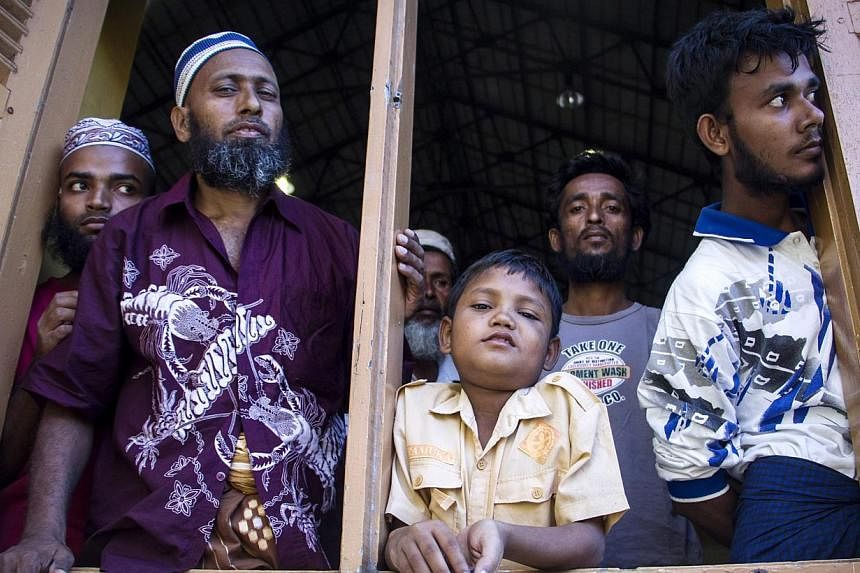BANGKOK (AFP) - Nearly 2,000 boat people from Myanmar and Bangladesh, many thought to be Rohingya, have been rescued off the coasts of Indonesia and Malaysia since Sunday.
Scores more have been found dazed and malnourished across southern Thailand this month.
They are all believed to have been abandoned by people traffickers fearing a crackdown on their lucrative trade.
Who are they?
The Rohingya are a stateless Muslim ethnic group viewed by the United Nations as one of the world's most persecuted minorities.
Using a dialect similar to that spoken in Chittagong in southeast Bangladesh, the Sunni Muslims are met with hostility by many in majority Buddhist Myanmar who view them as illegal immigrants and refer to them as "Bengali".
More than a 1.3 million Rohingya live in Myanmar, according to the government. Most live in impoverished western Rakhine state, but are denied citizenship.
There are also around 300,000 Rohingya living in Bangladesh's southern coastal district bordering Myanmar, the vast majority of whom have fled Myanmar in recent decades. But Bangladesh recognises only a small portion as refugees and regularly turns back those trying to cross the border.
Rights groups say many of the unregistered Rohingya in Bangladesh lack access to basic healthcare and are on the verge of starvation, leaving them as easy targets for human traffickers.
Why are they fleeing?
Fierce communal violence between Buddhists and Muslim Rohingya in Rakhine in 2012, which left some 200 dead and tens of thousands trapped in squalid camps - mainly Rohingya - catalysed the latest exodus.
The Rohingya have long been treated as "foreigners" by Myanmar's Buddhist majority.
Myanmar has a multitude of ethnic groups, many of whom have conducted sporadic armed rebellions since independence from Britain in 1948.
But the Rohingya are not officially recognised, partly owing to a 1982 law stipulating that minorities must prove they lived in Myanmar prior to 1823 - before the first Anglo-Burmese war - to obtain nationality.
Many Rohingya say their people were in Myanmar long before then, but while there have been suggestions from the authorities that citizenship could be granted to those with a long-standing link to the country, proving a Myanmar heritage will be difficult.
How many have left?
The UN refugee agency says well over 120,000 have fled since the 2012 violence, an exodus that is gathering pace.
The agency estimates 25,000 people from Myanmar and Bangladesh have taken to boats headed south in the first three months of this year alone.
An estimated 53,000 left in 2014, braving the sea crossing to southern Thailand with many headed for Malaysia and beyond.
Hundreds die at sea every year.
Of those who survive, many fall into the hands of people traffickers in Thailand which has become a hub for the trade in people, often with government, police and navy officials' involvement in the multi-million-dollar trade.
Dozens of shallow graves believed to belong to Rohingya and Bangladeshi migrants have been unearthed in southern Thailand since early May.

